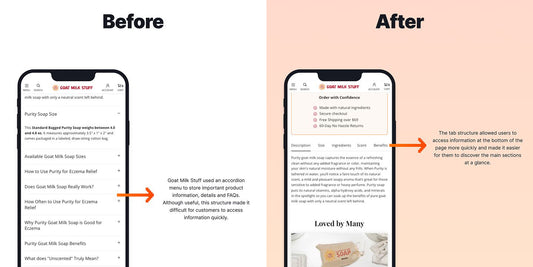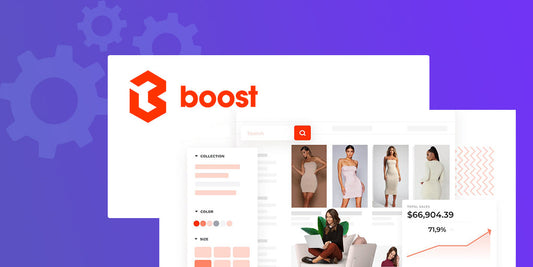Table of Contents
Get useful eCommerce stuff
A common trap that most business owners fall into is believing that success lies in getting as many customers as possible. The only thing that matters is that people are making a purchase, right?
Wrong.
The truth is, if your hope is to take your business to new levels and build a strong, loyal customer base that consistently spends, you need to turn your attention away from one-time customers who don’t truly believe in your brand. You need customers who are actively involved with your brand and find your products to be incredibly valuable.
This is why you need strategies that consistently optimise the customer experience and take buyers to more enriching, valuable places.
After all, there is no better way to clinch the loyalty and engagement of your customers than by giving them an experience they will never forget – and Conversion Rate Optimisation with Customer Value Optimisation Methodology is the vehicle that will take you into the hearts of your buyers.
What is Customer Value?
A click, a purchase, a review, a subscriber – it’s what it’s all about – the customer. That’s who you cater to with your products and to whom you tailor your strategies. However, not all customers are created equal in terms of customer value.
Customer Value is the cost investment into attracting/retaining a customer vs the revenue return of their loyalty.
It’s usually grouped into three categories but can be adjusted to fit your company’s goals:
Low Value: the customers that bring in minimal profit – don’t buy very often and only buy low-margin products, return products, etc.
Mid Value: the general majority – one-off or occasional customers, with an average spending and return rate.
High Value: the ideal customer profile – repeat buyers or high-margin spenders, satisfied and loyal.
The goal here is to turn as many low- and mid-value customers as possible into high-value ones.
Why is Value Optimisation Important?
Customers aren’t created equal, but they are all equally important to consider.
By employing strategies that optimise (and maximise!) customer value, the business model becomes more efficient cost-wise, channelling spending into approaches that create the most beneficial outcomes while bringing in a profit that you can re-invest.
For this to be successful, you need to accurately determine the value of each customer and provide the appropriate response for each.
RFM
The first point of action is to analyse customers according to the Recency, Frequency, and Monetary Value (RFM) Model.
Recency: How long has it been since a customer’s last activity? (i.e., purchase, interaction)
Frequency: How often does a customer engage with the company? (i.e., number of transactions, loyalty)
Monetary Value: What is the average spending commitment of a customer? (i.e., Average Order Value (AOV), transactions value)
Keeping in mind the specifications of your business, you may have to adjust the way you measure, allowing for average or desired customer lifecycle, frequency, and product value margins in your industry.
The next step is to apply these measurements to your advantage.
Optimising Your Customer Value
The strategy of extracting the maximum value from your existing customers by transforming them into an Infinity Pool of high-value customers is called Customer Value Optimisation (CVO).
Jay Abraham’s theory is that a business can only be grown in three ways:
By increasing:
- The number of customers
- The average transaction value per customer (Monetary Value & AOV)
- The number of transactions per customer (Frequency)
This model also effectively connects with the components of a high-value customer base – many customers who buy more frequently at higher amounts and return often.
So, where do you start with building a Customer Value Optimisation system? There are several clear steps to take, ensuring to delight customers at every checkpoint to keep sweeping them off their feet.
The 7 Steps
1. Find the Fit
The first step is to align the Product/Market fit.
Figure out what your market is and where your product fits in. What is your customer’s problem, and how is your product a solution?
Define both your target market and product relevance in detail, and from there, work through understanding what your customers want at each value level. In this way, you can optimise your marketing to address their needs better, focusing primarily on mid- and high-value level customers.
If you want to go further, determine how your product is the best solution out of all the competitors. The wider the gap between your target customers’ concern and the state of satisfaction when your product solves it, the more value your product holds for them – which can be reflected in the pricing.
2. Target Traffic
The second step is to narrow down your most effective traffic sources.
There are many traffic sources and platforms available, both paid and unpaid. Spreading efforts across many inefficient sources can be hard to manage and measure, which wastes time and resources.
Focus on the traffic sources that bring the most value. Your aim is to filter and attract the prospective and most engaged customers and drive them to the rest of the CVO funnel; have the correct tools and metrics in place to measure the value of the traffic.
Measuring the value is incredibly important, as you aim to track engagement and relevant traffic data to understand what is working and what isn’t. With the proper targeting, the resources you invest into the traffic source (and each visitor or click) should eventually provide a reliable return on investment in the form of a high rate of attracted visitors turning into engaged customers.
When you get to the point of stable growth from your traffic source, you might find that you may well be able to afford investing even more than the face value of the traffic because you have established a stream of proven conversion down the line.
3. Lure in with Lead Magnets
You can look at lead magnets as the customer hook, where you offer useful products for free in exchange for contact info.
Lead magnets are usually placed on landing pages or squeeze pages to attract attention and ask for names and emails in return. By receiving the customer’s info, you are officially opening up an avenue of direct marketing where you can follow up and further engage.
Lead magnets should be valuable to the customer and free of charge. If they are useless, vague, or misleading, they will be ineffective at convincing customers to volunteer their info and open up mutually beneficial communication.
Discounts, courses, guides, and templates are all lead magnets. Offer various lead magnets of interest to your target market, segmenting them by topic or type. Specificity in Lead Magnets helps encourage a high conversion rate as their appeal is highly tailored to your target audience’s needs.
4. Tease with a Tripwire
A Tripwire is a low-fee product offer with the aim of converting leads to paying customers.
This is the first financial transaction in the funnel where your audience is presented with a valuable offer at an irresistible price, encouraging them to transition to buyers and drawing them into higher-priced products.
The Tripwire must offer a proper taste of your product or services on a low-cost or discounted scale. Depending on your industry, this could be products, books, special introductory prices, or free trial access. The aim of this transaction isn’t to generate profit. It is a way to get customers over the hurdle of hesitance.
You can publicise your Tripwires on your website, and they are most often used when your Lead Magnet has made a positive impact. This is also where your Customer Service and Experience should start shining through, making communication a delight for the customers.
5. Prepare the Core Offer
This is the main event where the core product comes in: your business’s flagship products or services.
Hooked and reeled by the lead magnet, and over the hurdle and happy with the tripwire, your customer has been primed for continuing the relationship with the brand. If they have been satisfied with the service, quality, and value so far, customers will be more interested and inclined to buy your higher-value core items.
You can go on to offer them your core product (your specialisation in what is most valuable for your customers) and the features they should invest in and keep coming back for. Customers are much more likely to buy at this point after having had several different positive transactions and experiences with the business compared to a situation where the Core Product was marketed via cold campaigns.
And although this part can be profitable, the main money usually comes in the next step…
6. Provide a Profit Maximiser
Profit Maximisers are additional products that complement and enhance your core offer.
Every purchase is a customer’s experience with a product, and items or services that enhance that experience are usually where most businesses make their profit.
These products are usually offered during or after the sale of the Core Product. You can create a rich brand ecosystem by enticing Profit Maximisers that are useful to the customer into your plan.
Upsells, cross-sells, recommendations, accessories, bundles, subscriptions, premium tiers, and memberships are all examples of profit maximisers and a great way to leverage these is through Rebuy.
7. Retain with a Return Path
As customers go through this Customer Value Optimisation system, their value increases. Step-by-step, they are turned into high-value customers, buying at high margins and returning often. Maintaining an ongoing relationship with your customers is crucial to keeping them high-value.
Use a Return Path to gently direct existing customers to the start of your CVO funnel.
Incentivising customers to return is key to continuing the cycle of providing value and receiving profit.
A Return Path restarts the process of overcoming hesitation and easing them into their next purchase. This reinforces you to work through the steps of the RFM model – increasing the frequency and monetary value of interactions with your customer base.
Loyalty programs, discounts, exit offers, personalised email marketing, ad retargeting, social media, and other incentives are all ways of maintaining contact and re-engaging.
Get the ball rolling
By understanding how your customer base works and measuring it with the correct metrics. You can use Customer Value Optimisation to increase the potential of your customers. At Blend, we offer advance Conversion Rate Optimisation that will help you drive Customer Lifetime Value through our CRO Plus program which leverages both CRO and CVO.
If you’re looking to streamline your inbound business model, making it cost-efficient, and extracting the maximum value from each customer, all while providing top-quality service to meet their needs, let us help you tick your boxes faster by getting in touch with us today!
About the author

Jo Badenhorst UX Strategist
The vibrant heart of Blend Commerce, Jo has an infectious enthusiasm for taking on new challenges, making her a driving force in our team. With a deep background in psychology, Jo looks beyond the data to truly understand the motivations behind customer actions, making her approach to eCommerce both thoughtful and effective. With Jo as part of our team, we’re not just working; we’re creating, innovating, and setting new standards in the eCommerce world.








